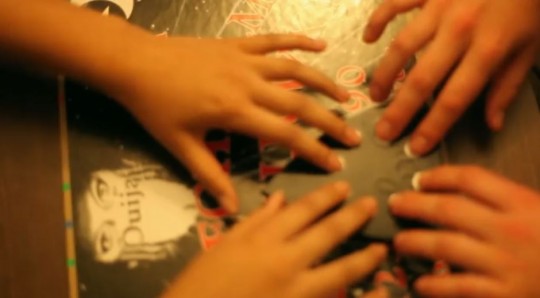Ouija Board Neuromarketing
 Every neuromarketing technique has one main purpose: get beneath consumers’ conscious reactions and see what they think subconsciously. While some neuromarketers employ high tech equipment like fMRI machines, a Canadian group says a simple device first used in 1890 may unlock our brain’s secrets. A team from the University of British Columbia’s Visual Cognition Lab thinks that, used properly, the Ouija Board can show what subjects are really thinking.
Every neuromarketing technique has one main purpose: get beneath consumers’ conscious reactions and see what they think subconsciously. While some neuromarketers employ high tech equipment like fMRI machines, a Canadian group says a simple device first used in 1890 may unlock our brain’s secrets. A team from the University of British Columbia’s Visual Cognition Lab thinks that, used properly, the Ouija Board can show what subjects are really thinking.
If that sounds preposterous, here’s the rationale:
At our lab, we believe that Ouijas are a window into our unconscious mind. The way that the game manages to trick our brains into making unconscious movements gives us a unique opportunity to see what exactly makes up our unconscious mind and an opportunity to meet our unconscious selves.
We have already completed one experiment which we published the results in the journal Consciousness and Cognition. In that study we found that people had conscious access to only a part of their total intelligence, and that the unconscious answers of a Ouija board managed to draw out knowledge that the players didn’t even know that they had.
Their clever approach blindfolds the subject, who thinks another player is helping move the pointer. In fact, only the subject actually moves it.
Here’s a video from the Inner Intel project:
Led by UBC professor Dr. Ronald Rensink, the team is seeking crowdfunding to explore its concept in more detail. They say they are going the crowdfunding route because of the difficulty in obtaining conventional academic research funding. (Shocking, I know… it seems like academics would be delighted by the prospect of funding Ouija board research!)
So, what do you think? Crazy or brilliant? Planning to support the effort?
My concern: with many academics already dismissing neuromarketing as pseudoscience, the last thing the industry needs is association with a piece of “psychic” gear. Still, the idea is intriguing in its very simplicity.
